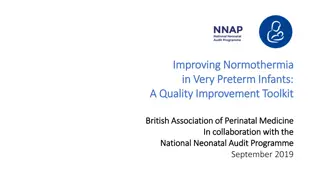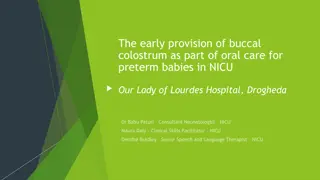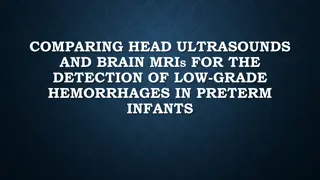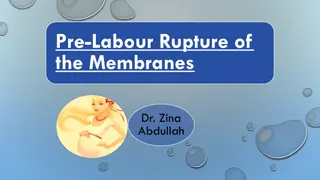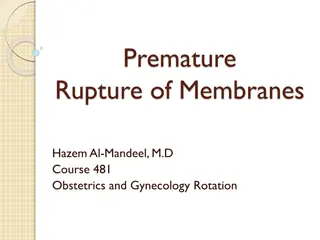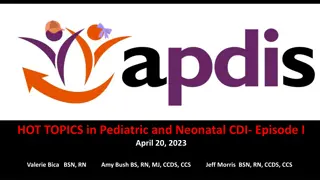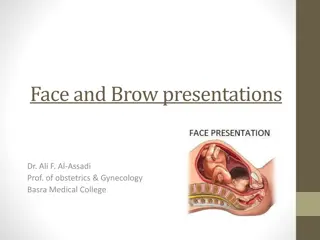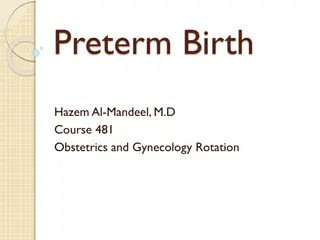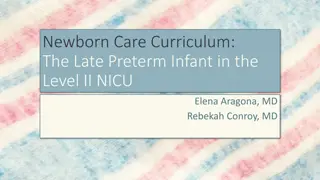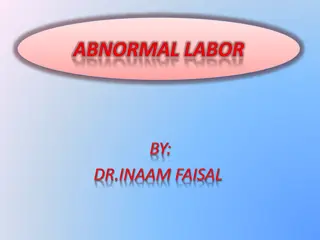Understanding Cesarean Section and Preterm Labor Risks
Cesarean section (C/S) is a delivery method for various fetal and maternal indications, while preterm labor poses risks like twin pregnancy, uterine abnormalities, and infections. Complications of C-sections and signs of preterm labor are discussed, highlighting the importance of early recognition and proper management.
Download Presentation

Please find below an Image/Link to download the presentation.
The content on the website is provided AS IS for your information and personal use only. It may not be sold, licensed, or shared on other websites without obtaining consent from the author. Download presentation by click this link. If you encounter any issues during the download, it is possible that the publisher has removed the file from their server.
E N D
Presentation Transcript
Caesarean section (C/S) Preterm labour BY MSC ZAHRAA ABDUL GHANI M.A.
Caesarean section (C/S) Cesarean section is a term used to describe the delivery of a vaiable fetus through an incision in the abdominal wall and the uterus. The majority of cesarean sections are performed for fetal indications, a few are soly for maternal reasons, and some benefit both fetus and mother. Common indications for cesarean delivery 1. Precious (high risk) Fetus 2. Prolonged labour or a failure to progress (dystocia) 3. Apparent fetal distress 4. Aapparent maternal distress 5. Complications (pre-eclampsia, active herpes) 6. Catastrophes such as cord prolapse or uterine rupture 7. Mmultiple births
8. Abnormal presentation (breech or transverse positions) 9. Failed induction of labour 10. Placental problems (placenta praevia, placental abruption or placenta accreta) 11. Umbilical cord abnormalities (vasa previa, multi-lobate including bi-lobate and succenturiate-lobed placentas, velamentous insertion) 12. Contracted pelvis 13. Sexually transmitted infections such as genital herpes (which can be passed on to the baby if the baby is born vaginally, but can usually be treated in with medication and do not require a c-section) 14. Previous caesarean section prior problems with the healing of the 15. Perineum (from previous childbirth or Crohn's Disease).
Complications of C-section Most of the serious complications associated with cesarean section are not due to the operation itself. Instead, the complications arise from the indication for the cesarean section. For example, a woman whose placenta separates prematurely (placental abruption) may require an emergency cesarean section, Under these circumstances, complications arise primarily from the placental abruption itself. Fortunately, serious complications are rare. However, the following minor complications can occur in women having cesarean sections 1. Infection 2. Bleeding 3. Atony 4. Lacerations 5. Placenta Accreta 6. Blood Clots
Preterm Labor Risk factors for preterm labor 1. Twin pregnancy 2. Uterine abnormalities 3. Vaginal fibronectin 4. Age and race: increased age will increase the incidence of preterm labor. Black people have a short gestational period and their infants are of lower weight per week of age 5. Prior preterm labor 6. Urinary tract infection (UTI) 7. Bacterial vaginosis 8. Vaginal pH >4.5
Signs of preterm labor Uterine contractions and cramps Vaginal discharge Bleeding Backache Leaking of amniotic fluid Treatment of preterm labor 1. Bed rest 2. Hydration: 500 ml of balanced electrolyte solution, such as Ringers lactate IV over 30 min.peroid. Hydration is continued at a rate of at least 125 ml/hour. 3. Tocolytics A. Magnesium sulfate: as high conc. have been shown to decrease uterine activity. The dose is 6 g IV as bolus dose in 250 ml of sol. over 30 min. period; the infusion is then maintained at 2-4 g /hr. B. - Mimetic drugs: like ritodrine as it causes uterine relaxation is administered IV and slowly titrated upward until a response is achieved. The dose is 100 /min. IV, with increases of 50 /min.every 10 min to a max of 350ug/min.
4. Glucocorticosteroid: these drugs are administered for the reduction of respiratory distress syndrome in preterm infants. The mechanism by which these drugs decrease lung disease is enzyme induction in type II pneumocytes of increased production of surfactant, which in turn reduces alveolar surface tension. All women between 24 and 34 weeks of pregnancy at risk for preterm delivery are candidates for antenatal corticosteroid therapy. Treatment should consist of either Tow doses of 12 mg of Betamethasone IM 24 hours apart or 4 doses of 6 mg of Dexamethasone IM 12 hours apart. Some benefit begins at 24 hours, with a maximum benefit at 48 hours after imitation of therapy and lasting for 7 days. Treatment is given weekly until fetal maturity. 5. Group B Streptococcus treatment: Premature infants are very susceptible to early GBS infections. So the use of Pencillin is recommended. 54 6. Calicum Channel Blockers: these drugs have been used for preterm labor as Nifedipine, Nicardipine and Verapamil as they inhibit contractions. Dosage of nifedipine is 10-20 mg every 4-6 hours orally sublingually in the first hour, followed by 60-160 mg/day of slow-release nifedipine.
Prevention of pre-term labor Progesterone Studies have demonstrated that progesterone given to women with a history of spontaneous preterm birth can effectively decrease the incidence of recurrent preterm birth in a subsequent pregnancy. The optimal formulation for this indication has not been identified, but the most commonly used agent, based on data from the largest clinical trial, is 17-Hydroxyprogesterone caproate. Dose: 250 mg IM weekly initiated at 16 to 20 weeks of gestational age and continued until 37.


